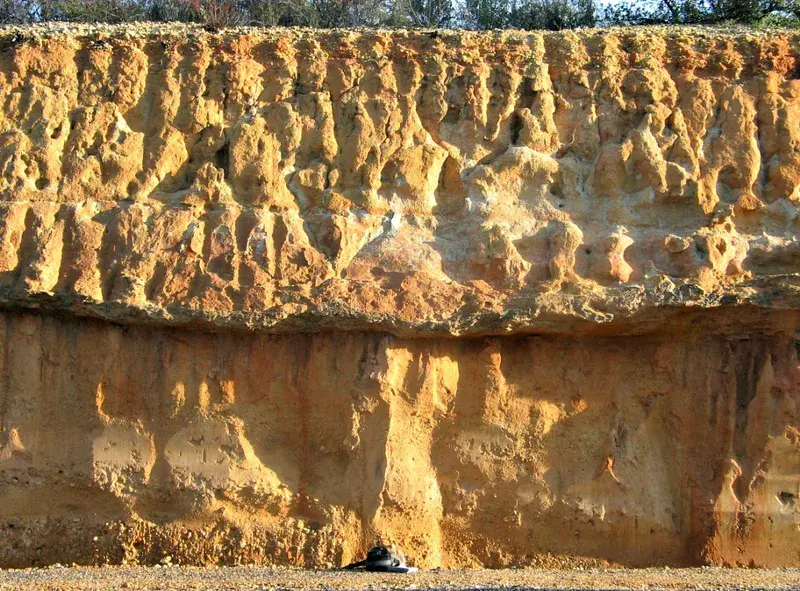
Haplic Regosol on Quaternary sediments showing iron concretion
by Antonio Jordán, University of Seville, Sevilla, Spain
The early Quaternary in Huelva shows a very extensive and homogeneous landscape between the foothills of the South Portuguese Zone and post-tectonic depressions in the Guadalquivir valley. Sediments are composed of homogeneous detritus (sand and gravel, mostly), with frequent occurrence of biocalcareous sands.
The chemical nature and physical properties of unconsolidated substrates condition the performance of edaphogenic processes.
The crust in the middle is an iron concretion (see a detail at https://imaggeo.egu.eu/view/13539) I think it is a lateritic crust, 120 - 140 cm deep (sometimes reaching about 400 cm) in a very acid soil (pH is 5.2 in the first 10 cm and 4.4 - 4.8 below 10 cm). Surely this soil was formed under a more wet and hot climate, probably a Tropical climate, 25-65 millions years ago (Miocene-Paleocene).
Categories
Location
- Europe (3885)
- Southern Europe (1685)
- Spain (813)
- Exact location (-6.8282 W, 37.4875 N)
Tags
Colours
Image properties
1024 × 756 px;
image/jpeg; 377.9 KB
Camera:
Canon PowerShot G3
Taken on 25
October
2005
Submitted on 10 November 2014
Licence
Creative Commons Attribution-NonCommercial-ShareAlike 3.0 Unported (CC BY-NC-SA 3.0)
Credit
Antonio Jordán (distributed via imaggeo.egu.eu)
Share
Appreciate
Report